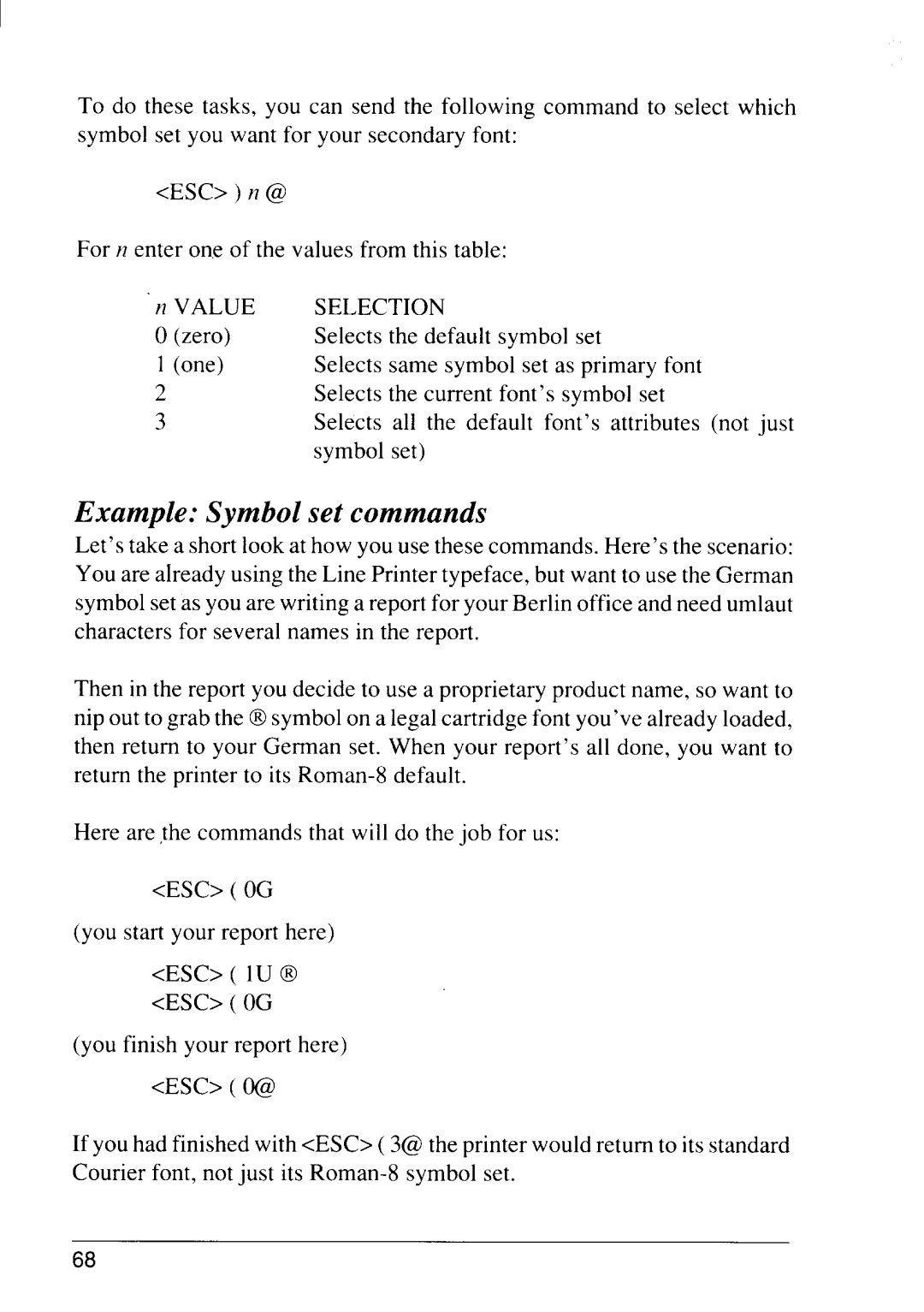
To do these tasks, you can send the following command to select which symbol set you want for your secondary font:
<ESC> ) n @
For n enter one of the values from this table:
n VALUE | SELECTION |
O(zero) | Selects the default symbol set |
1 (one) | Selects same symbol set as primary font |
2 | Selects the current font’s symbol set |
3 | Selects all the default font’s attributes (not just |
| symbol set) |
Example: Symbol set commands
Let’s take a short look at how you use these commands. Here’s the scenario: You are already using the Line Printer typeface, but want to use the German symbol set as you are writing a report for your Berlin office and need umlaut characters for several names in the report.
Then in the report you decide to use a proprietary product name, so want to nip out to grab the @symbol on a legal cartridge font you’ve already loaded, then return to your German set. When your report’s all done, you want to return the printer to its
Here are the commands that will do the job for us:
<ESC> ( OG
(you start your report here)
<ESC> ( IU @ <ESC> ( OG
(you finish your report here)
<ESC> ( O@
If you had finished with <ESC> ( 3@ the printer would return to its standard Courier font, not just its
68
